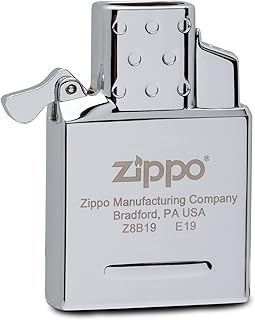Here's how they achieve this:
* The Windshield: The iconic Zippo case has a distinctive design with a built-in windshield that surrounds the flame. This creates a barrier against gusts of wind, preventing the flame from blowing out.
* The Fuel Tank: The fuel tank is sealed with a special gasket and a spring-loaded lid. This ensures that the fuel vaporizes properly and remains contained within the lighter, even in windy conditions.
* The Flint: The lighter utilizes a high-quality flint that strikes readily and produces a consistent spark, even in windy weather.
However, it's important to note:
* Extreme conditions: While Zippos are known for their wind resistance, extreme winds (like hurricane-force winds) may still affect the flame.
* Fuel levels: A lighter with low fuel may be more susceptible to being blown out in windy conditions.
* Improper maintenance: A dirty or damaged lighter may not function optimally in windy conditions.
Overall, Zippo lighters are known for their exceptional wind resistance and are often used in outdoor environments where wind can be a factor.


